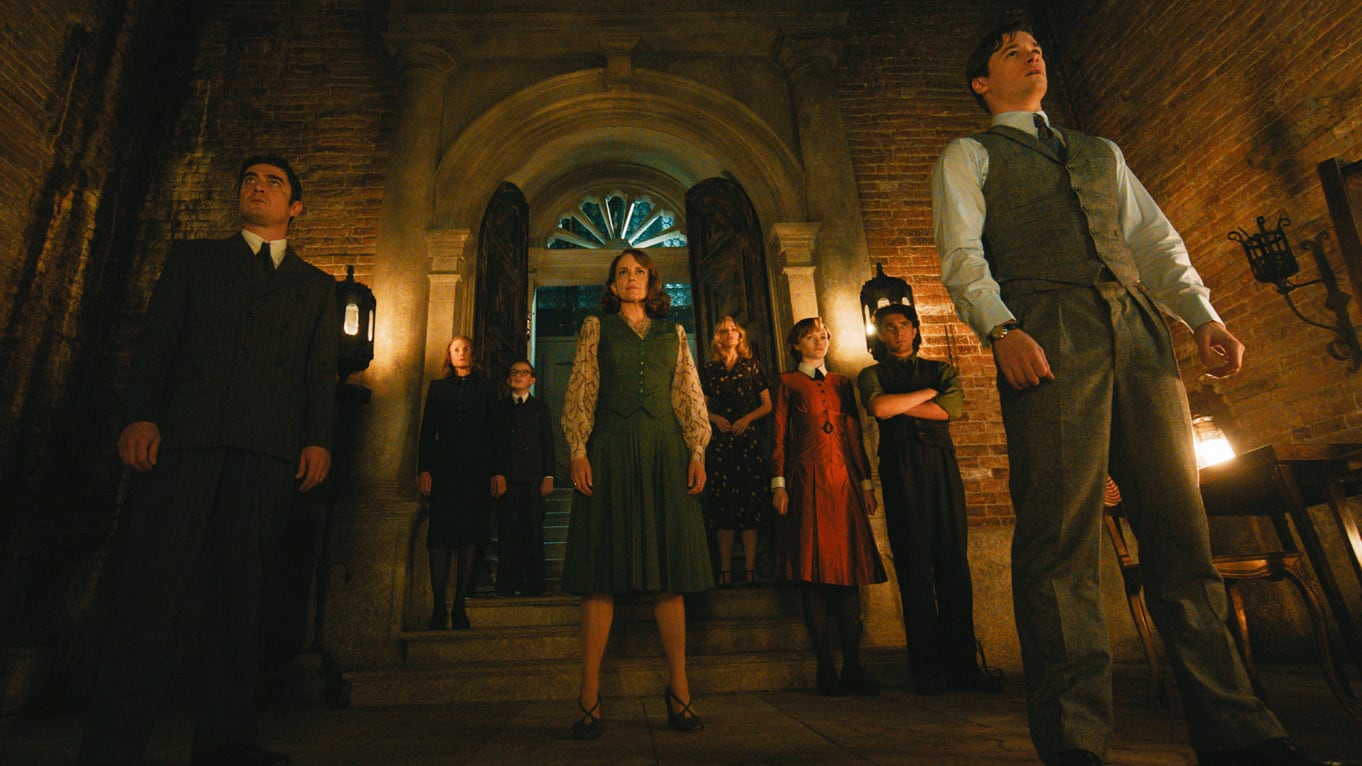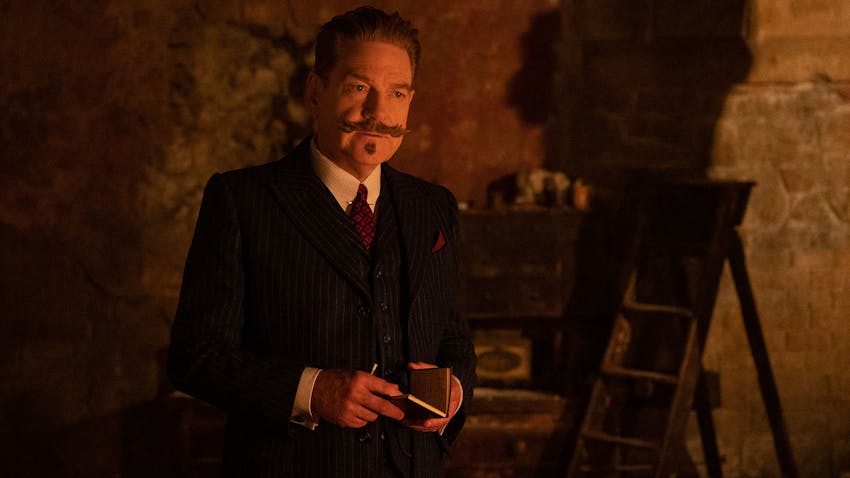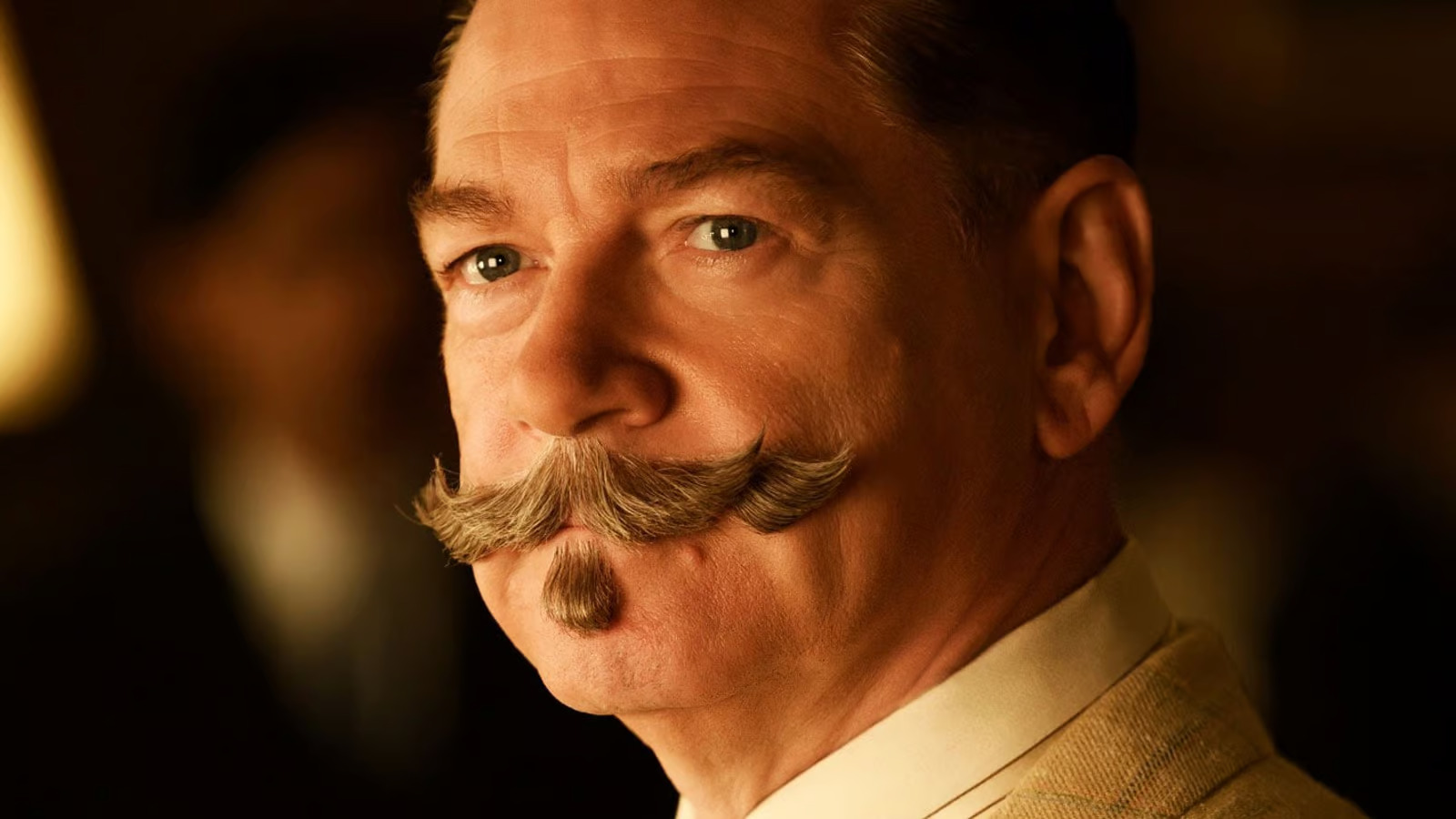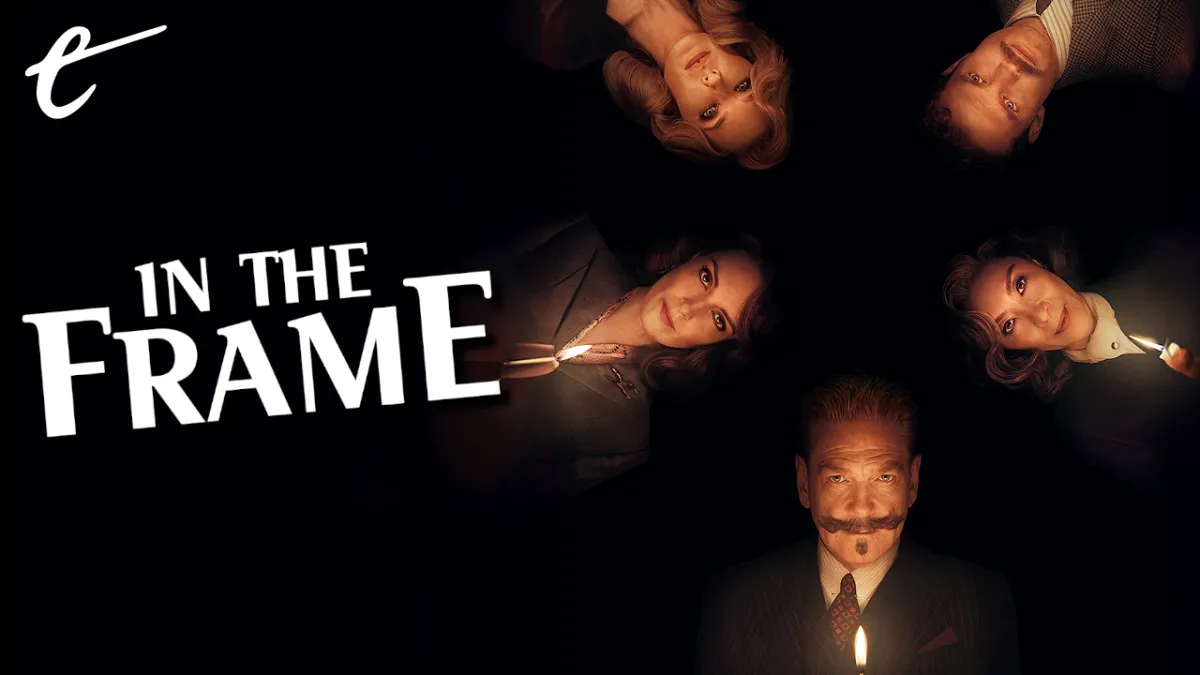A Haunting in Venice is bookended by Vera Lynn’s recording of “When the Lights Go On Again (All Over the World),” which plays over the movie’s opening montage and its closing credits. It established both tone and theme for Kenneth Branagh’s latest Agathie Christie adaptation, which transports Christie’s novel Hallowe’en Party to the eponymous Italian city.
Originally recorded in 1943, the song has been interpreted as a celebration of British perseverance during the Blitz. Many listeners would have seen the song’s title as a response to Sir Edward Grey’s famous comments on the eve of the First World War, “The lamps are going out all over Europe. We shall not see them lit again in our life-time.” With London under siege from German bombers during the Second World War, blackout restrictions ensured that the lamps were literally going out.
Released at the height of the conflict, the song imagines the aftermath of this epoch-defining trauma. It asks the listener to believe that at some future point “ships will sail again all over the world, then we’ll have time for things like wedding rings and free hearts will sing.” It is a fundamentally optimistic song, albeit one recorded in a very dark time. Fittingly, A Haunting in Venice unfolds in the aftermath of the Second World War, in the eponymous city in October 1947.
The characters in A Haunting in Venice have all been scarred by the conflicts that raged across Europe in the previous decades. As established in the opening scenes of Death on the Nile, Hercule Poirot (Branagh) himself is a veteran of the First World War. Joyce Reynolds (Michelle Yeoh) was a nurse during that conflict, and it is suggested that the experience might have put her in tune with the dead. Doctor Leslie Ferrier (Jamie Dornan) is haunted by the memories of liberating concentration camps.
The specter of the war haunts the movie in other ways. As Ariadne Oliver (Tina Fey) points out, the occupying American forces have brought the festival of Halloween with them. Much of the cast is made up of displaced expatriates, dispossessed individuals drifting across a shattered continent. Maxime Gerard (Kyle Allen) is a chef who plans to move on to New York. Desdemona (Emma Laird) and Nicholas Holland (Ali Khan) are Hungarian refugees hoping to make it to Missouri.
For her part, Oliver is an American novelist searching desperately for inspiration abroad. She reaches out to her old friend Poirot, who has been so bitterly disillusioned by the events of the previous few years that he has given up on the world. He lives alone in his Venetian villa. His only contact with the outside world is his bodyguard Vitale Portfoglio (Riccardo Scamarcio) and the twice-daily pastry deliveries. There is something morbid about A Haunting in Venice, even before the murders begin.

Of course, the film isn’t really about the aftermath of the Second World War. It has something more contemporary on its mind. The bulk of the plot unfolds in a house owned by Rowena Drake (Kelly Reilly). The cast assembles to witness Reynolds perform a séance, but the drama begins around midnight, when Reynolds is thrown from a high window and impaled on a statue. As a storm rages outside, law enforcement is unable to take control of the scene. So Poirot locks the house down.
The building is supposedly haunted. During the plague, children were abandoned to death and disease within its halls. According to legend, their ghosts seemingly hunger for vengeance and retribution against any doctors and nurses who might venture into the home. Over the course of this single long evening, there are two mysterious deaths. Both are healthcare professionals traumatized by unimaginable horrors: Reynolds during the First World War and Ferrier during the Second.
Venice has a long history with infection. Bubonic plague ultimately contributed to the collapse of the Venetian Republic. The city was among the early pioneers of quarantine (from the Italian phrase for “forty days”) in response to the black death. The Santa Maria della Salute was built to commemorate the end of a particularly terrible plague. Among the city’s most iconic visages is the classic plague doctor mask. The ferrymen in A Haunting in Venice all wear the “bauta,” itself a plague mask.
A Haunting in Venice is a pandemic horror, and not an especially subtle one. Superficially, it exists at the union of two recurring trends in post-pandemic blockbusters. Like Guardians of the Galaxy, Vol. 3 and Fast X, it is a movie about an absent God. At the start of the film, Poirot has given up his passion. He no longer solves murders. When confronted by Oliver, he explains that he can no longer believe that there is an order to the universe. The horrors that he has seen are too senseless and arbitrary.
Indeed, this is what offends Poirot most about Reynolds, who claims to be able to commune with the dead. Poirot argues that she is an opportunist, somebody cynically exploiting a sense of communal grief. However, there is a more fundamental unease. If Reynolds isn’t faking, then that would mean that God does exist, He has just turned his back on Poirot. “God would not break His rules for her,” Poirot insists when challenged about his obsession with proving Reynolds a fake.
The other contemporary blockbuster trend suggested by A Haunting in Venice is the post-pandemic travelogue that typifies other trilogy-cappers like The Equalizer 3 or My Big Fat Greek Wedding 3. As the world opens up again, these movies allow older audience members to take in exotic foreign vistas. This is, after all, one of the perks of the globe-trotting whodunnit, as typified by Rian Johnson’s recent efforts like Knives Out or Glass Onion: A Knives Out Mystery.

However, A Haunting in Venice feels like something of a subversion of this. Branagh’s previous two Poirot movies, Murder on the Orient Express and Death on the Nile, were also globe-trotting adventures, but were notable for their copious amounts of computer generated imagery. Digital fakery somewhat undermines the appeal of this format. The beauty of classic murder mystery films like Evil Under the Sun or The Last of Sheila is the decision to shoot in real locations.
Ironically, the foreign setting of A Haunting in Venice feels much more convincing than the synthetic surroundings of the previous two movies. It’s very clear that Branagh and his crew did shoot on location in Venice. However, the bulk of the movie takes place over a stormy evening in a creepy old house, shot on sets in Pinewood Studios. Although the earlier films were also set in isolated locations, A Haunting in Venice is decidedly more claustrophobic.
In some ways, A Haunting in Venice is the exact opposite of what the audience expects from a film like this. Branagh eschews the weird blockbuster aesthetic of Murder on the Orient Express or Death on the Nile, which was always at odds with Christie’s characterization of Poirot as a gentleman sleuth. A Haunting in Venice rejects escapism. It is a very glum affair. As Reynolds notes when she steps out of her gondola into the palazzo, “This will be a sad one.” She isn’t wrong.
The previous entry in the series, Death on the Nile, wrapped production in December 2019, just before the pandemic. However, when the outbreak closed theaters, the film was stuck in a sort of limbo. The contractual terms of Disney’s purchase of 20th Century Fox meant that the film could not be sent directly to streaming. The film was originally scheduled for October 2020. It was then pulled from the schedule. It was then rescheduled for September 2021. It finally released in February 2022.
The film was beset by other issues. Cast members Armie Hammer, Letitia Wright, and (to a lesser extent) Gal Gadot became embroiled in scandals. Branagh’s next film, the Oscar-nominated Belfast, was written, produced, and released while Death on the Nile lingered in pre-release purgatory. Branagh even carries over Irish actors Jamie Dornan and Jude Hill from Belfast into A Haunting in Venice, once again playing the role of father and son. Death on the Nile became a prominent pandemic film, but was never intended as one.
A Haunting in Venice is very obviously a product of the late pandemic era. It was commissioned based on the success of the release of Death on the Nile, with Branagh noting that “the streaming performance was really exceptional.” Production only truly began in late 2022. As such, it makes sense that A Haunting in Venice is not a movie about the pandemic, but a movie about what happens next. It is a film about characters trying to move on from an unimaginable tragedy.

After all, the film itself is structured around the idea of an aftermath. Not only is it set in the wake of the Second World War, the cast are drawn together to conduct a séance concerning the seeming suicide of Rowena Drake’s daughter, Alicia (Rowan Robinson), several months prior. Although Reynolds and Ferrier both die over the course of the evening, everything that happens stems from that original event. Many of the characters are haunted by it.
As a police officer, Portfoglio investigated the death, and it drove him to quit the force. Gerard was in love with Alicia, and there is some sense that his planned trip to New York is a way to escape her ghost. Rowena has been trying to sell the house, but nobody will buy it. Nobody can really speak about these consequences of this momentous loss. Poirot has to use his keen detective skills to make these connections. There has been no proper reckoning with the trauma of Alicia’s death, just as Poirot himself must reckon with his own existential crisis.
Branagh shoots A Haunting in Venice like an old-fashioned gothic horror, the kinds of films that British studios produced during the late 1950s and into the 1960s. It’s paranoid and unsettling. He shoots extreme close-ups with wide-angle lenses, giving a distorted fisheye effect. He employs his beloved Dutch angles. Composer Hildur Guðnadóttir gives the string section a workout. At points, Branagh goes handheld and even straps an Eyemo camera to himself, evoking Requiem for a Dream.
The result is a heightening of the material that is more effective than the bombast of Murder on the Orient Express and Death on the Nile. It’s a reminder that people really haven’t fully processed the trauma of a global pandemic that has an official death toll of almost 7 million people, but which analysts suggest may have led to between 17.8 million and 32.5 million excess deaths. There’s a sense in which people still don’t know how to talk about or even understand what happened.
Although there are debates about the tastefulness or the accuracy of the comparison, World Health Organization Director-General Tedros Adhanom Ghebreyesus compared the “mass trauma” of the pandemic to that of the Second World War. As pop culture still figures out how to talk about the pandemic, A Haunting in Venice attempts something even more challenging. It tries to find a way to talk about the aftermath. It’s been a long and dark night. What happens when the lights go back on?






Published: Sep 15, 2023 11:00 am